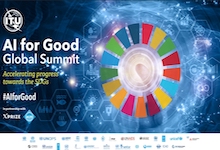Collaborating and Investing in beneficial AI
18 May 2018 02:00h
Event report
Mr Frits Bussemaker (Chair, Institute for Accountability and Internet Democracy), acting as moderator, opened the session and explained that the aim is to showcase examples of how countries and organisations are approaching artificial intelligence (AI).
Dr Ahmed Al Theneyan (Deputy Minister for Technology Industry and Digital Capacities, Ministry of Communications and Information Technology, Saudi Arabia) started his intervention by underlining that technology is a key enabler for development. This is why Saudi Arabia has elaborated a comprehensive digitalisation strategy, which is built on several pillars: building resilient infrastructures to support all new technologies, developing the digital skills of the population (with a focus on youth), supporting innovation and entrepreneurship (through, for example, facilitating access to open data), and developing efficient electronic government services. The strategy focuses on promoting sustainable cities and communities, citizens’ health, decent work, economic growth, and gender equality, among other issues. Against this backdrop, the country is exploring the use of AI in innovative, responsible, and ethical ways, while supporting the development of this technological field, through key enablers: governance and legislation, investments, talent, and innovation.
Al Theneyan underlined that Saudi Arabia places a high importance on revamping the education system to match the technological progress: digital competencies are introduced in the curricula of primary schools, while universities create dedicated programmes and career paths focused on new technologies such as AI. The overall objective of these initiatives is to prepare the young generation for the skills needed in the future. In addition, Saudi Arabia has understood the importance of empowering more women to take active roles in technology fields. Its goal is to double the number of women in information and communication technologies (ICTs) over the medium term, and several programmes have been launched in this regard, mostly in collaboration with universities. Aiming to become one of the most attractive destinations for innovators and entrepreneurs, the country is building a network of innovation centres and tech accelerators to support these goals.
Amb. Amandeep Singh Gill (Permanent Representative of India to the Conference on Disarmament, and Member of the Task Force on AI for India’s Economic Transformation) argued that, while there is value in exploring the notion of beneficial AI, we should keep in mind that technology has multiple purposes and can be repurposed. He then went on to outline the work carried out by India’s Task Force on AI. Tasked with determining India’s vision with regard to AI, the task force reached several conclusions: AI should be treated as a tool for problem solving at scale; the country’s governance approach should be agile, sensitive and rooted in real needs; and enablers and safeguards should be put in place to avoid a backlash against AI, which would set the country back many years. Such enablers include expertise and awareness on AI, a positive social attitude and trust in AI, data literacy and policies for the proper use of data, and leveraging indigenous digital assets and local case-use scenarios. The task force took the approach of cautious optimism to the overall impact of AI on jobs, and outlined the need for AI to be transparent, explainable, and auditable. It also recommended the creation of a National AI Mission to coordinate AI-related activities in India and build public-private partnerships around concrete AI projects.
Singh Gill concluded his intervention by noting that collaboration and investments are key to supporting a country’s efforts to advance in the field of AI. Investments must be interdisciplinary, and all stakeholders need to be able to contribute to defining governance frameworks for AI.
Mr David Li (Founder, Shenzhen Open Innovation Lab) discussed the open nature of AI innovation. He noted that innovation is driven by access to knowledge, technology, and means of production. If these three elements are in place, innovation ‘can happen in the street’, and one does not have to be a large company to be able to innovate. To illustrate the concept of ‘AI from the street’, Li gave several examples of projects, such as an initiative focused on the development of machine translation tools within the framework of a school which teaches programming to refugees, and a Tibetan Buddhist centre dedicated to teaching young monks about digital technologies.
According to Lee, beneficial AI will not necessarily come from the Silicon Valley or from Shenzhen, but rather, from every street corner where people leverage resources to help their neighbours and communities. This is why we should see AI as a global resource and encourage people to use AI to create solutions to the problems faced by their communities.
During the moderated discussion that followed, a point was made that a smart city is much more than technology, it is community, common space, and governance. AI’s potential lies in its ability to bring people together around problems and problem solving. The success of smart cities will depend on three main elements: a right understanding of the technology, good collaboration among multiple stakeholders, and smart investments. Technology in itself will not deliver solutions, unless the environment around it enables this. Another concluding remark was that AI needs to be designed in such a way that there is transparency and understanding around it. We need to ‘take machines to schools and to streets’, to make everyone feel like they are part of the AI evolution. This, combined with proper governance and collaboration, will allow opportunities to be leveraged and risks mitigated.
Related topics
Related event

